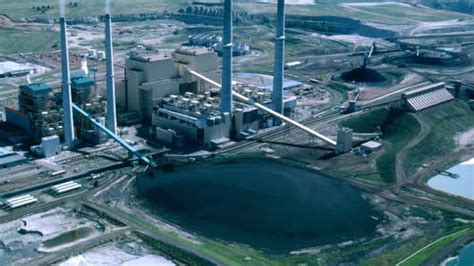The small town of Colstrip, Montana, nestled under the big sky with its shimmering coal plant on the outskirts, may seem like any other picturesque American town. But beneath its seemingly tranquil facade lies a contentious debate that has pitted environmentalists against industrial interests.
At the heart of this clash is the Colstrip power plant, which has gained notoriety as the nation’s top emitter of harmful particulate matter. This designation by the Environmental Protection Agency (EPA) has brought the aging facility under intense scrutiny and regulatory pressure.
The situation escalated when news broke that the coal plant was seeking an exemption from stringent pollution control measures mandated by a recent rule introduced during the Biden administration. This development sent shockwaves through environmental circles and raised concerns about public health and ecological impact.
“The aging Colstrip power plant in Mont., emits more harmful fine particulate matter pollution than any other power plant in America.”
Under normal circumstances, such a request for leniency might have gone unnoticed. Still, given Colstrip’s dubious distinction as a major polluter and the urgent need to address climate change, this move attracted widespread attention and condemnation.
As stakeholders on both sides geared up for what promised to be a protracted battle over environmental regulations, voices from different quarters weighed in on the issue. Senator Steve Daines and Montana’s congressional delegation threw their weight behind the exemption plea, citing economic concerns and regional energy stability.
“The new pollution standard ‘endangers…the region’s electric grid,’ warned Senator Steve Daines.”
Despite these assertions about potential economic repercussions if Colstrip were to comply with stricter pollution limits, critics pointed out a glaring omission in their argument—the lack of consideration for public health impacts caused by fine pollution particles emitted by the plant.
Experts in respiratory health cautioned against downplaying these risks posed by soot particles released into the air. These microscopic pollutants are capable of infiltrating deep into human lungs and bloodstream, triggering or exacerbating cardiovascular and respiratory diseases—a fact supported by extensive scientific research conducted over years.
Amidst growing concern about environmental degradation and its toll on public well-being, advocates for stringent pollution controls have been rallying support to counterbalance industry demands for exemptions like those sought by Colstrip’s operators.
As discussions around granting waivers to notorious polluters continue to unfold in political corridors and regulatory agencies across America, one thing remains clear: striking a balance between economic imperatives and safeguarding public health will require careful deliberation and unwavering commitment from all stakeholders involved.



Leave feedback about this